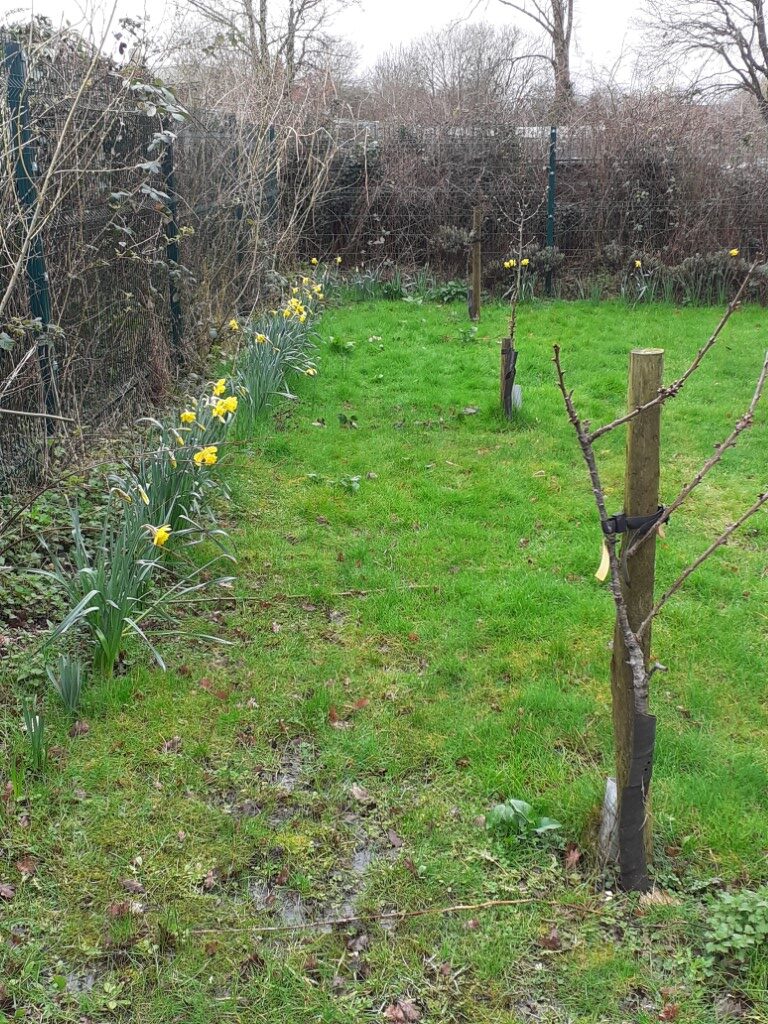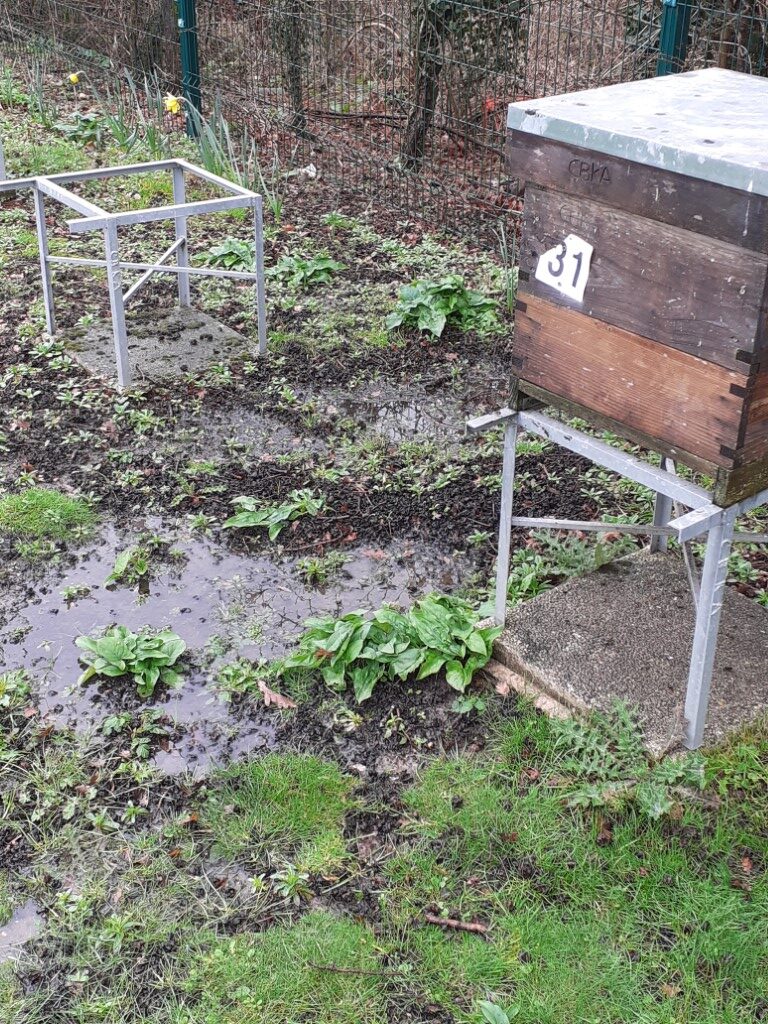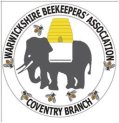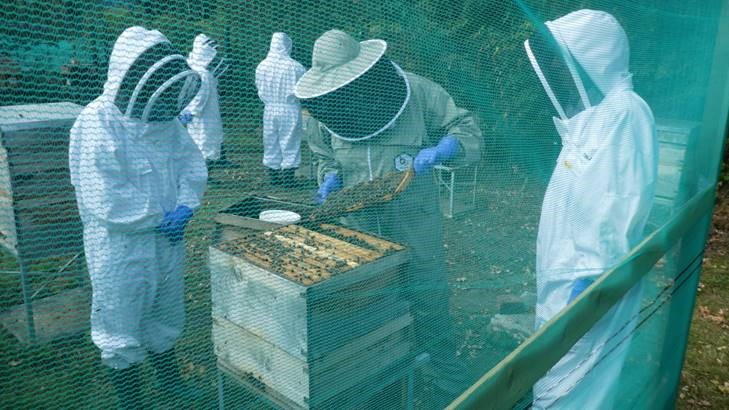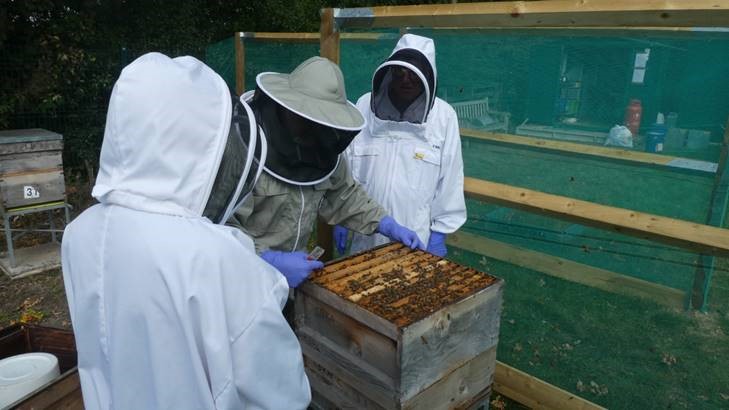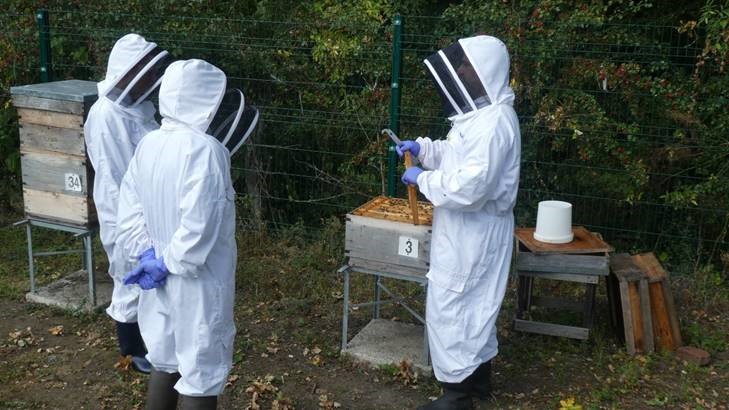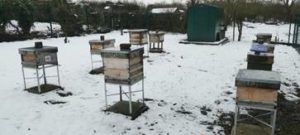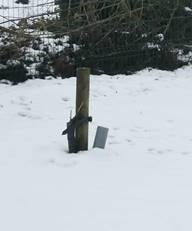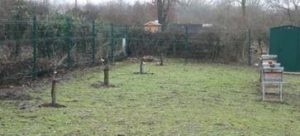We went to the site today to do a routine weekly inspection.
8 Members turned up to help and to talk beekeeping.
The weather was actually very good. It was nice sitting out in the sunshine with a hot drink and some biscuits.
The bees were quite well behaved – no one was stung.
5 of the hives went according to plan.
One hive (#6) had started producing queen cells ready to swarm, so we found the queen and put her in a nuc (#1) with a few hundred bees and a frame of stores.
That will stop any imminent swarming but next week it is very important that the original hive (#6) is checked carefully for queen cells and only the one selected queen cell is left in place, which in 7 days’ time will be a nice capped queen cell.
The ‘dodgy hive’ (#34) was inspected after the beginners and observers had left. There were 4 of us around the hive to see what was happening.
It turned out to be a non-event. The bees were calm and doing what bees do.
The colony was quite crowded and had 10 frames of brood, so needed space. The brood frames were quite dirty and needed changing, so instead of adding a 3rd super we decided to change all the frames by starting a Bailey Frame Comb change, by adding a brood box full of foundation.
As this hive had 2 supers on, which were being filled and there is a nectar flow on, we decided not to add a feeder of syrup, and would see what happens in the next 7 days. Normally we would add a gallon (5 litres) of syrup to get all 11 frames of foundation drawn out but with supers the syrup could contaminate any honey in the supers.
The next inspection will tell us if it was a good decision or not.
On the basis of today I have taken hive #34 off the “naughty list”, but one to be wary of.
Next Sunday (14th) the students who attended the beginners’ course in February will be visiting the apiary site. They will have priority, but members are welcome (and encouraged) to come along and socialise. The time will be 2pm to 4pm.
